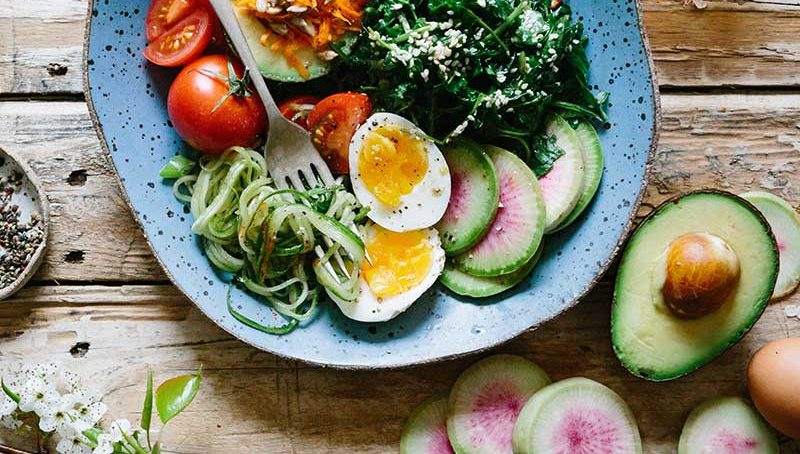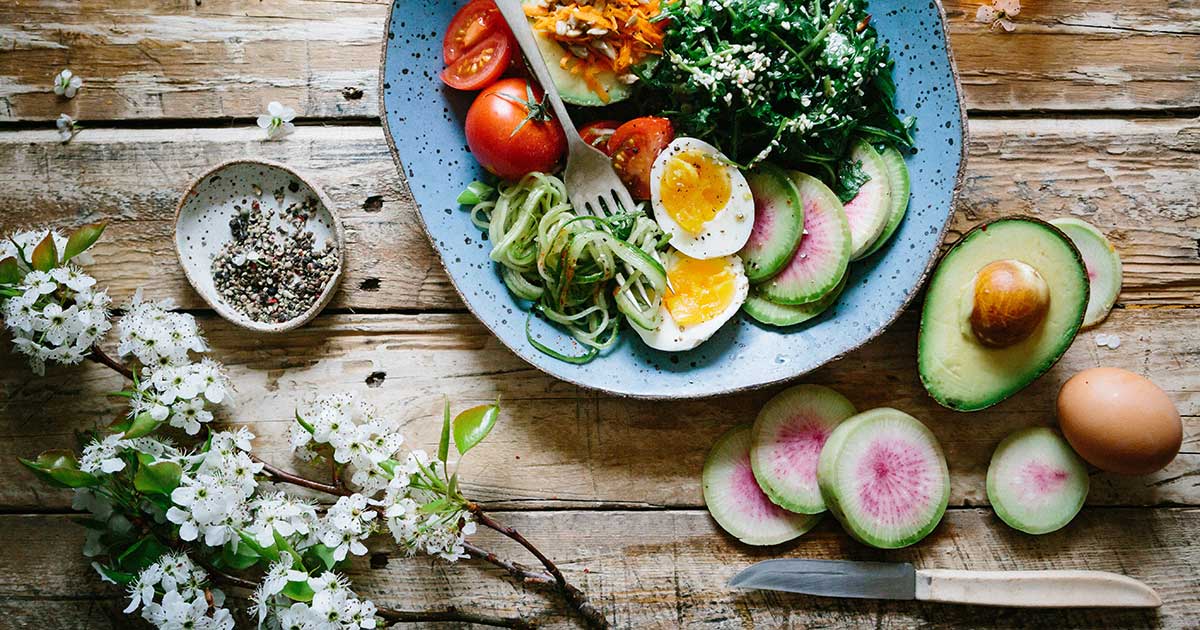The business of eating healthy has not only changed consumer eating habits, it’s produced regional sales growth that can no longer be ignored. Nada Alameddine, partner at Hodema consulting services, gives us a rundown of the basics and some surprising new trends
Nowadays, everyone knows someone who has food intolerances or perhaps even allergies. The usual suspects are dairy, gluten, nuts and wheat. Processed meals and products with flavor additives and conservatives consumed in Western societies are to blame, hiding allergens in their recipes and thus transforming basic ingredients into digestive timebombs. Other everyday basics, such as meat, fruits and vegetables, are also seemingly damaging to our system, with controversial genetically modified organisms (GMOs), pesticides and hormones widely used by farmers in recent years. What we ingest has basically become a toxic threat and eating well a daily crusade. Many of us have embarked on this healthy quest, experimenting with dozens of scenarios to eat our way to health.
Going meatless
The number one prerequisite is of course the quality of the ingredients. And that is well understood by most consumers, who now favor sustainability when grocery shopping, the key words being organic and local. Organic agriculture is not even a trend anymore; rather it is now deeply and permanently changing eating habits across the industrialized world, although higher prices still prevent many from buying pesticide-free products. Only a few years ago, healthy food meant tasteless meals or exotic grains, whereas now, a respect for nature and for our health go hand in hand with how our food tastes. Consumers are no longer prepared to compromise on taste for their health. This motto first and foremost applies to vegetarians, whose numbers have boomed on the back of alarming revelations about the meat industry that continue to be exposed. Ecological concerns have also been a major trigger for many quitting meat altogether.
Going meatless is definitely the main diet trend of the last decade. Easy meat alternatives include vegetal proteins, such as quinoa, lentils, chickpeas and other protein-rich leguminous plants, as well as eggs and fish. The trend has put forgotten grains, such as alfalfa and fenugreek, and vegetables, like parsnip and salsify, back on the table, recalling the ingredients favored by previous generations and giving dishes a nostalgic feel. It even has a name: ‘Fresh Foraged Feasting’. But vegetarianism is not only about going back to our roots; new technologies and science are also playing a major role in improving our diet. In addition to the now popular soya steak, dozens of meat alternatives are flooding the market. Plant-based burgers and sausages, insects, algae and lactose-free yogurts, to name just a few, are going mainstream, and even converting the snack industry, which had always proudly worn the ‘junk food’ coat of arms, to its cause. Popcorn is now made of hemp, and crispy bacon snacks from mushrooms. But the key development of significance is undoubtedly cell-based meat, which is basically meat and protein extracted from the cells of animals and doesn’t require them to be slaughtered. Some may argue that this food product is still meat, but animal lovers will applaud it. In addition, eating fish, eggs and dairy is increasingly becoming a bone of contention in the current climate, prompting many strict vegetarians to turn vegan and end consumption of all animal-derived products.
Finding tasty alternatives
One of the main concerns with adopting a restrictive diet is the prospect of sacrificing all the flavors and tastes that we love and have grown up with, especially junk food and pastries. The good news is that the food industry is finding ways to bypass forbidden ingredients by developing new recipes. Chickpeas are replacing milk in ice cream and wheat in pasta, while the liquid leftover is being used to make mayonnaise, butter and a stand-in for egg whites in cakes. Even hemp waffles and charcoal-active vegan croissants can be found today. New types of milk are also appearing; besides the already-popular alternatives of almond, rice, oat and soy, a wide range of lactose-free dairies are emerging, from banana and walnut to flaxseed and hemp. Pizza – another millennials’ favorite – is also undergoing a revamp. You can now find gluten-free, grain-free pizza crusts made from beetroot, sweet potato and zucchini. Zucchini noodles are also proving popular with gluten-haters. Fish pastas made of wild Alaskan pollock are the latest find, with the American brand developing the product promising protein-rich noodles free from any fishy smell or taste. For alcohol lovers, the traditional ‘wine pairing’, which matches food and drink to enhance the dining experience, has become ‘vegan pairing’, to prove that a vegetable-based meal can also be an experience. When it comes to cuisine types, Middle Eastern and Asian vegetable-loving cultures stand out. Falafel, hummus, kibbeh and balila in the Arab world, alongside bibimbap, bulgogi, gujeolpan and eomuk in the Far East are everyone’s favorites, mixing strong flavors with healthy ingredients. Tahini is also in high demand as a substitute for butter in all kinds of dishes, while fermented foods, such as kimchi, tempeh and kefir, have been labeled microbiota-friendly.
The superfood religion
Many of these products come under the umbrella term of ‘superfoods’ which are currently very much in demand. But what does this label mean? In a nutshell, these foods are nutritionally dense and nutrient rich, making them good for our health. Some are even considered an effective way of warding off diseases such as cancer or heart problems. But they are not a food group per se, so eligibility criteria are vague and can vary, with some critics describing the word as little more than a marketing tool. Mainstream superfoods include salmon, kale, blueberries, beans and nuts. However, star health gurus are promoting more niche varieties on social networks. Acai berries, moringa, matcha and powders such as curcuma, spirulina and maca are appearing on the plates of every self-respecting foodie. Probiotics, formerly taken to treat digestive or fatigue problems, are also becoming widespread. In addition to kefir and kimchi, kombucha and kvass are said to boost gut health. These natural probiotics are being joined by a new generation led by the ‘Bacillus coagulans GBI-30’ and ‘Bacillus coagulans MTCC 5856’ incorporated in granola, nut butters and soups.
What’s hot in 2019?
One of the most noticeable recent evolutions is that health and wellness brands are no longer high-end luxury or niche, and have started targeting a wider audience of health-oriented consumers. When it comes to trends, the most talked about concept this year has to be cannabinoid, an extract from the cannabis plant. Already used in lotions and oils to help reduce inflammation and pain, it has no psychoactive effects and is making its way into coffee, cocktails, olive oil, yogurts, soups and even salad dressings. Another controversial fad is insects, labeled ‘Proteins of the Future’. Grasshoppers and other worms can be found in stores, with the latest addition to the menu being cockroach milk! Pacific Ocean fruits are also causing a buzz. Very popular on social networks, thanks to their colorful aspects, the dragon fruit and the yuzu are used in cocktails, smoothie bowls, fruit salads, sorbets and other desserts. Even Starbucks has introduced two drinks made of dragon fruits. Guavas and jackfruits are also in demand, while the black sapote is fast making a name for itself. Halfway between a chocolate pudding and a sweet potato, this Mexican fruit has a growing fan club, thanks to its extensive qualities which range from preventing eye diseases to improving digestion and weight loss. Even water, which is the ultimate healthy drink, can apparently be healthier; ginger water is the new craze, with its anti-inflammatory, digestive and hydrating virtues. Elderberry water is also proving popular, thanks to its white flower which is antioxidant, antiviral and diuretic. Cacti, too, have a part to play, due to their essential oils and CBD (derived from cannabis), which can also be mixed with water. And finally, eating well in 2019 also means eating pretty. Social apps are flooded with styled photos of mouthwatering recipes. These platforms are playing a major role in promoting healthy diets. On Instagram, the hashtag #food has been mentioned more than 300 million times.
Saving the planet?
It is now proven that stores and restaurants with strong environmental positioning have greater success. The belief that eating well can help the planet is spreading throughout Western societies, especially among Millennials. Traceability of products, a good code of conduct in the industry that involves waste recycling, a lower carbon tax and implementing an inclusive and respectful HR policy all matter to consumers.
















